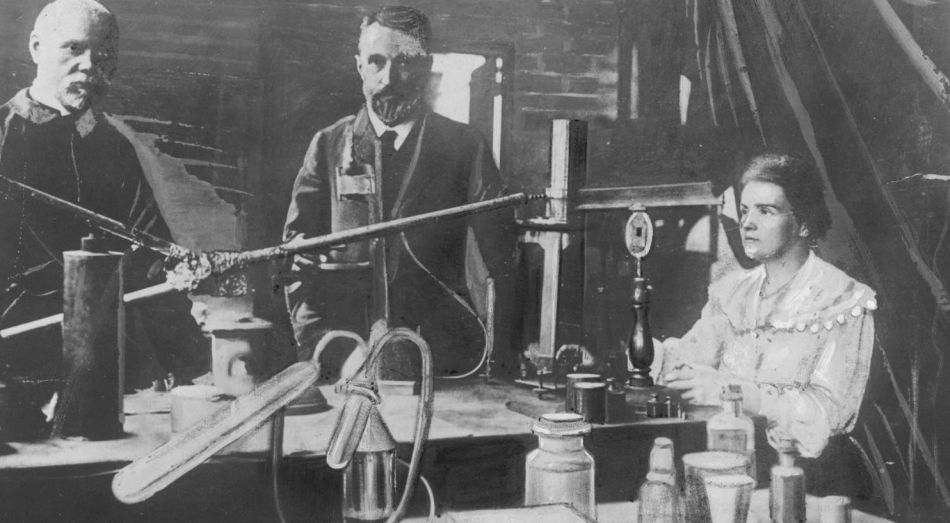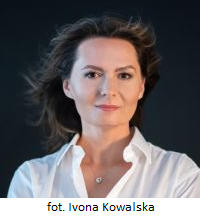Christopher Nolan’s film about the father of the atomic bomb, J. Robert Oppenheimer, invites us to a discussion about our reality and future, the nature of life in the age of the atom and the world of rapid technological advances that can be used for unintended purposes.
Inspired by the film, Dr Aleksandra Wrońska, PhD, wrote an article titled “An Evening with Oppie” in which she talks about the differences between contemporary science and its older incarnations, considers morality, ethics and potential consequences of scientific activities, and discusses the issue of responsibility for the results of one’s work and the possibility of losing control over how it is used. Read on to find out more.
An Evening with Oppie
Aleksandra Wrońska, Faculty of Physics, Astronomy and Applied Computer Science, Jagiellonian University in Kraków

Frame from the movie „Oppenheimer”, dir. Christopher Nolan, Universal Pictures
Oh, what a treat it was! Christopher Nolan’s newest feature, Oppenheimer, might have lasted three hours, but it left no room for boredom. It’s probably a must-see film of the summer not only for cinephiles, but also for all fans of science. Hardly surprising, considering the topics involved: the Manhattan Project, a nuclear bomb, the end of the Second World War; not to mention, the sense of mystery and the great success story. It is a film that simply has to be seen. For me, a nuclear physicist, the film had also several other interesting dimensions.
Excitement Partially because it allowed me to cast my mind back to my earliest moments of fascination with physics, similar to the experiences of young Oppenheimer. As young students we were not yet fully educated on the subject, but already caught up in the most fascinating titbits of the field, such as the counterintuitive nature of quantum mechanics or the paradox-filled theory of relativity. We spent long hours in discussion, sharing our knowledge with each other and fuelling each other's excitement and curiosity. However, in our student years, these theories were already well-established, while young Oppenheimer could observe if not their birth than their early development and maturing. He could see the whole understanding of the world and its structure changing and encountered entirely new tools for describing physical phenomena. Time linked to space, particles that are everywhere and nowhere at the same time, wave functions instead of tangible, localised objects – the first decades of the 20th century must have been fascinating for physicists!
Project It is well known that the Manhattan Project was an unprecedented undertaking, in great many aspects. When considered from the point of view of a contemporary scientist, the Oppenheimer's project can be an object of envy. He had virtually unlimited funds and resources, an impressive number of geniuses (future Nobel laureates) on the team, and could remove all administrative and organisational barriers thanks to his cooperation with the military. One simple “get my brother here”, and the man arrived; one request for supplies of then unimaginable quantities of plutonium and enriched uranium, and new industries were formed to accommodate this need. A sense of historical mission, teamwork, intellectual stimulation, a city and infrastructure created specifically for the project.... Amazing conditions for conducting research, aren’t they? But the research had its consequences.

Albert Einstein i J. Robert Oppenheimer at the Institute for Advanced Study, photo: US Govt. Defense Threat Reduction Agency
Morality and ethics Most likely, every person joining the Manhattan Project had to, at some point, think about said consequences. It had to be a great dilemma. On the one hand, the prospect of ending the war, defeating evil and saving many lives; on the other hand, potential hundreds of thousands of casualties and the creation of a terrible weapon that would not, after all, disappear once the war was over. I feared that this theme would not resonate in Nolan’s film, but my worries proved unfounded. The director presents a whole spectrum of attitudes - from the extreme pacifism of Albert Einstein and Niels Bohr to the full commitment to building even more powerful weapons represented by Edward Teller. For some of the characters, joining the project was a moral imperative, as they saw it as their contribution to ending the war and quelling the evil of fascism. Others refused to participate, rejecting the option on the basis of the project’s other consequences; both the immediate ones, namely the deaths of huge numbers of people, and the long-term ones: a complete shift in the nature of the world and the balance of power.
Science of today How does it look now? Of course, we have military laboratories, and, arguably, terrorist organisations are probably also developing their own science centres. Still, my colleagues and I, the scientists of the nuclear and particle physics departments at the Jagiellonian University, do not work on creating new weapons. Our research doesn’t seem to involve moral dilemmas. What could be controversial about the fundamental research carried out by my colleagues at CERN (ATLAS, LHCb experiments) or at GSI/FAIR in Darmstadt (HADES and PANDA experiments) whose goal is to explore the subtleties of strong and electroweak interactions? What are the dangers of finding out whether neutrinos have mass and what its hierarchy is, if these particles hardly ever interact with other particles and detecting such interactions takes hard work (BOREXINO experiment)? The same is true for the search for dark matter. We can identify the influence of its gravity in how the universe operates, but so far we have been unable to register any of its postulated components (JEDI experiments, DarkSide). The applied research we conduct also seems to be “morally safe”: e.g. constructing new medical imaging systems or improving proton-based cancer treatments (J- PET and SiFi-CC projects).
Consequences However, the consequences and future applications of the results of scientific research are usually not easy to predict. The main motivation of the work of Becquerel, Rutherford, or Marie and Pierre Curie was most likely the desire to know the structure of matter, understand the nature of things and explain the observed puzzling phenomena in a rational way. Did it occur to them what the future consequences of their discoveries might be? Marie Curie had great hopes for the discovery of radium and its use in medicine and other fields, while Pierre, in his Nobel speech, expressed that he feared that radium could become very dangerous in the criminal hands and that he thought that the question should be asked whether mankind was ready to reap the benefits of learning the secrets of Nature. Ultimately, however, he expressed the hope that humanity would derive more good than harm from the new discoveries. When Lisa Meitner calculated the energy balance of the fission reaction observed earlier by Hahn and Strassmann, she was probably aware of the dangerous potential inherent in the process. Nevertheless, she published her results, although she categorically rejected any possible involvement in the development of nuclear weapons.

Marie Skłodowska Curie and her husband, Pierre Curie (centre) in a laboratory (the photo was originally taken before 1906; was found in the resources of IKC), photo: National Digital Archives/ / Koncern Ilustrowany Kurier Codzienny (IKC) – Illustration Archive/1-Z-494
Awareness Today, we work with the same hope which accompanied Pierre Curie. We aspire to deepen our understanding of the surrounding world and serve the good of mankind, no matter how lofty that may sound. Does the idea that we lose control over the subsequent use of our research once we publish its results keep us awake at night? The awareness that our discoveries and developed technologies may be used both for the good of mankind (who among us does not dream of that?), but also for evil purposes? Do we think about it? Probably not every day and not all of us. But the awareness is always somewhere in the back of our minds, and Christopher Nolan’s new film was a powerful reminder of this aspect of scientific work.
About the Author
 Dr Aleksandra Wrońska, PhD, works on experimental hadronic physics at the Faculty of Physics, Astronomy and Applied Computer Science of the Jagiellonian University, and collaborates with centres in Germany (FZ Jülich, RWTH Aachen).
Dr Aleksandra Wrońska, PhD, works on experimental hadronic physics at the Faculty of Physics, Astronomy and Applied Computer Science of the Jagiellonian University, and collaborates with centres in Germany (FZ Jülich, RWTH Aachen).
Initially focused on fundamental research (fundamental symmetry breaking, existence of meson nuclei), in recent years, she has been involved mainly in applied research, working with her team on a new type of imaging detector for applications in proton cancer treatment.

